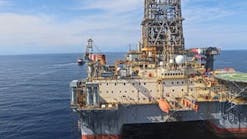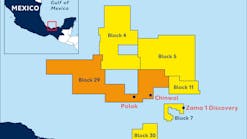Review of shallow water platform inventory offers preview of decommissioning requirements
Mark J Kaiser
Siddhartha Narra
Center for Energy Studies,
Louisiana State University
The shallow water Gulf of Mexico (GoM) has offered abundant opportunities for companies able to master the complex subsurface geology while managing the catastrophic risk of hurricanes. However, over the past decade there has been significant changes in the region with fewer wells being drilled and decommissioning activity reaching historic highs.
The business segment that deals with legacy properties has helped to slow decline rates through focused capital spending, especially for oil. In recent years there has also been significant asset turnover as companies seek to rebalance their portfolio and reduce their decommissioning liabilities. The entry of private-equity sponsors, the departure of prominent independents, and the bankruptcy of several companies in 2015-2017 have characterized a tumultuous market.
In part two of this series, the 1,908 standing structures in shallow water circa 2017 are described in terms of their producing, idle, auxiliary, manned, and multi-structure complex status.
Production status
Offshore structures are classified according to their production status, whether they are currently producing, i.e., structure produced during year of evaluation (producing); currently not producing, i.e., structure did not produce any hydrocarbons during year of evaluation but previously produced (idle); or never producing – or no current capacity to produce – serving in a support role for development or transportation (auxiliary).
Idle structures are broken out into two idle age categories, 1-3 yr idle and > 3 yr idle circa 2017, with caissons and well protectors consolidated into one category for simplicity.
A little less than half of all standing structures are currently producing and about one-quarter of all structures have been idle more than three years. Auxiliary structures comprise about 20% of the total inventory.
Well protectors number about one-third of the number of active caissons, and caissons and well protectors number about one-third of the total number of structures circa 2017. Fixed platforms are the majority structure type across all categories.
Manned structures
A manned platform is defined as having personnel normally present 24 hours a day, while on an unmanned platform or an eight-hour manned facility personnel are not normally present 24 hours a day and must be transported off the structure to shore or a manned platform at night.
A total of 811 manned structures have been installed and 208 manned structures have been removed in shallow water through 2017, leaving an active inventory of 603 manned platforms.
Manned structures are mostly of the fixed platform type and the few caissons and well protectors identified as manned are attached to manned complexes. According to BOEM’s structure naming convention, if a complex is manned then all the structures in the complex are classified as manned.
About one-third of manned platforms (192/603) are auxiliary manned structures which have been the most stable structure class in the GoM over the past three decades. Manned platforms typically serve multiple purposes, including drilling and production, regional processing, transportation and logistics roles, and are often tied, directly or indirectly, to multiple fields.
The number of mannedplatforms peaked at about the same time as the total number of active structures but at one-third the level, and whereas decommissioning has depleted shallow water inventories by about half from its peak (from 3,974 structures in 2001 to 1,908 structures today). The number of manned platforms – being some of the most important structures, either anchored to the largest reserves with the most processing equipment, and/or interconnected across multiple pipeline networks – have not been significantly impacted, declining by only a few dozen structures from its peak.
Shallow water manned structures supporting deepwater facilities and pipelines have been immune from the high pace of decommissioning that pervades the shallow water region because they are not tied to declining shallow water fields.
Multi-structure complexes
A platform complex is a single man-made structure or a group of structures connected by a walkway. A k-complex is defined to be the collection of k connected platforms. For example, a three-complex is comprised of three connected structures. The bridge that connects two offshore structures is called a catwalk and supports pipelines, pedestrian movement, and materials handling.
Multi-structure complexes are a shallow water phenomena since before the technology and service vessel capability were available to allow structures to be constructed vertically, they were built out horizontally on one or two levels using individual structures to isolate and separate drilling operations from production and quarters and other functions. In many cases, after drilling operations were performed from multiple structures, a central processing platform was installed to handle production.
In 2017, there were 1,348 active single-structure complexes in the GoM, excluding three compliant towers and 48 floaters, all single-structure complexes. When added to the 1,954 total structure count yields 2,005, the total number of active structures Gulf-wide circa 2017.
A total of 262 structures were identified as part of two-structure complexes. A two-complex may comprise two caissons, two fixed platforms, two well protectors, or a mixed structure combination (C-WP, C-FP, WP-FP). Adding up all the structures within two-complexes 2(13) + 2(86) + 2(1) + 2(31) yields 262 structures.
In the caisson, fixed platform and well protector columns in the accompanying table, only C-C, FP-FP and WP-WP types, respectively, are represented. The mixed platform category/column include any combination of C-WP, C-FP, or WP-FP.
There are 17 complexes with five or more structures per complex. About two-thirds of structures in multi-structure complexes are fixed platforms.







